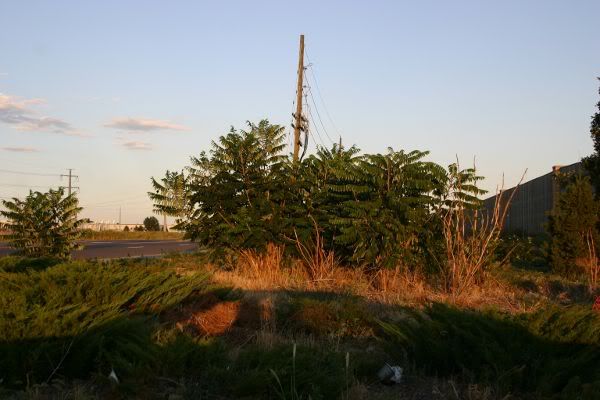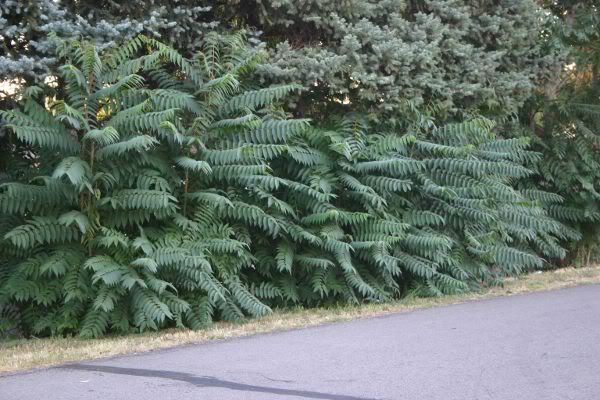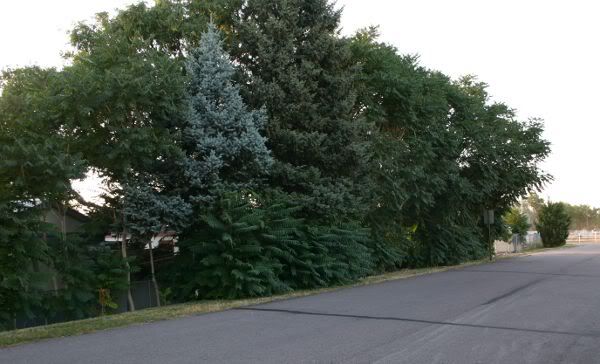

Posted by Mike Wood over 13 years ago
First, so we know what we're talking about:
http://en.wikipedia.org/wiki/Ailanthus_altissima
This tree is considered to be an invasive species in Colorado, and no doubt in other places. Our fearless leaders have decreed it to be undesirable. There are no active eradication efforts to my knowledge. I will not discuss its demerits here, as those can be found in any official literature on invasives. Rather, I hope to demonstrate its utilities in the context of permaculture -- pioneering, succession, land improvement, and ecological niches.
An interesting factoid I found in my research: one of these trees survived the Hiroshima A-bomb, 300 meters from where the bomb went off. It still lives today. Tough bugger. I have read much wailing and gnashing of teeth on forums about how difficult it is to kill. This is, in my opinion, a fact very much in its favor in the high desert steppe climate here, Colorado's Front Range. It can gain a foothold nearly anywhere; I've observed it growing from minute cracks in sidewalks, hard-nearly-granitic sand, gravel beds, and highly salted areas near roadways, making it an ideal candidate for land reclamation.
It is one of the few tree species that will establish from seed in this climate. Most of what is sold in nurseries as "appropriate" to the area requires careful nurturing to survive. Ailanthus needs no human intervention. A sprinkling of seed on the breeze will bring a forest in a few years' time. Thus, it is quite useful for broadacre permaculture projects where windbreaks are needed -- but sapling, labor, and irrigation costs might be prohibitive. There is not, to my knowledge, a faster way to establish a windbreak than with a species that will easily grow 2-3 feet per year in its first few years.
Once the windbreak is established, other, more desirable species may be planted in its shelter. (Nothing is more pathetic than to see those poor little Western Red Cedars struggling against the cold winter and hot summer winds on the prairie. It is a climax species that grows under a canopy in its youth.) Once the desired climax species have grown, the Ailanthus can be cut for firewood and/or mulch; it will be easily controlled under a canopy. In fact, the chopping might be an ongoing process providing considerable useful organic material.
Ailanthus I have found mainly in the cities of the Front Range, from Fort Collins to Pueblo; most frequently in the more run-down areas where landscaping is neglected. It is an opportunist and pioneer, so look for it in places where it would seem to be in need. Seed hangs on the tree quite late. Optimum time to harvest seeds is late fall through mid-winter. See the Wiki page for a photograph of the seed clusters. They are easily stripped off in handfuls.
Here, a stand of Ailanthus altissima in a sun-scorched pile of gravel in an unmaintained industrial area. Irrigation is unlikely. Maybe 5 years old, at most.

Here, some more young trees, perhaps 3-4 years old, in a road ditch by a trailer park. Lower left of the following picture.

And a wider view. Except for the blue spruce and the pine, the rest of the tall stand is our friend. I'd put the tallest at perhaps 15 years; not more than 20. The trailer park is barely visible behind; perhaps the "ghetto palm" moniker isn't entirely inaccurate. Nevertheless, it's shelter, habitat, and shade for a place where neither private property owners nor city officials will bother with landscaping, especially landscaping with a purpose.

I hope readers have found this informative. I'll add chapters on more of my woody friends as time permits. :)
--Mike
You must be logged in to comment.
